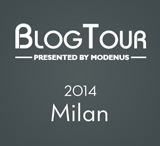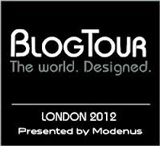Urban Hacktivism Reinventing Public Spaces
January 14, 2013 by Robin Plaskoff Horton

Florian Rivière, Wheelbench, Vienna, September 2012
You might call Florian Rivière a guerrilla urbanist. Much in the way guerrilla gardeners take possession of underutilized, sometimes offbeat, public spaces to plant gardens, Rivière–a self-proclaimed “urban hacktivist”– reinvents and diverts public spaces as a means of encouraging citizens to “reclaim their urban environments.” Inspired by hackers, DIY culture, and civic engagement, Rivière’s “hacktions”– a fusion of public space design, upcycling and militant expression—are usually raw and spontaneous and created exclusively from objects found on the street.

Florian Rivière, Free Library, Paris, May 2012
I stumbled across Rivière a while ago but was reintroduced to him through Bettery Magazine, which I found through one of my favorite sites, Yatzer. In part of a series where Battery hosts a discussion between creative minds about the transformation of cities, they invited Rivière and sustainability pioneer, Professor Dr. Michael Braungart, who asked the urban hacktivist how people could use their “creative eye to make changes that benefit entire communities.”
People can become more attuned to their surrounding urban space, Rivière believes, by viewing and using everyday objects in new ways—by bending, diverting, and playing with “the rules of urban space.” To demonstrate this, he introduces in a video what urban hacktivism can do with just a skateboard, a symbol of the freedom of urban mobility.
A bit like Marcel Duchamp’s iconic urinal that the artist dubbed Fountain, Rivière demonstrates his ideas repurposing the skateboard to add or change its functionality and that of selected public spaces.
When stuck into a bench’s slats, the skateboard is no longer a skateboard, but a desk for an outdoor workspace. Turn the skateboard over, and you have a bottle opener and the bench desk now becomes a table for enjoying drinks. At a bus stop, the skateboard now becomes a coat hanger onto which one can hang a bag or jacket. With an attached rope, the skateboard becomes a trolley or wagon for moving objects found in the street. Covered with blackboard paint, it can display a message, that if used while hitchhiking, becomes a vehicle for traveling the world…you get it.
Rivière feels we all need to use our imaginations to “build our own environments.” People, explains Rivière, need to become active citizens, not passive consumers. He uses his urban hacktivism to experiment with how urban communities can solve problems and build things by reusing spaces, furniture, and objects like free resources within the community’s streets, parks, and vacant lots.
In experiencing his urban hacktions, Rivière hopes people will develop new ways of thinking about their environments, reusing or upcycling every available resource for the well-being of the community.







 e-mail a friend
e-mail a friend


















I love the whole idea of an urban hacktivist! This artist is able to take back space and twist it in a new shape. Plus, it helps others stop and rethink their ideas about urban planning and design. Thanks for sharing!
— January 15, 2013 @ 00:32
Guerrilla Architecture: Hacktivist Temporary Urban Housing Pingback said:
[…] omnipresent in cities that they almost blend in to the blur of everything else. Belgain artist and hacktivist Karl Philips took advantage of that phenomenon and started his project “The Good, the Bad and […]
— September 4, 2015 @ 18:30